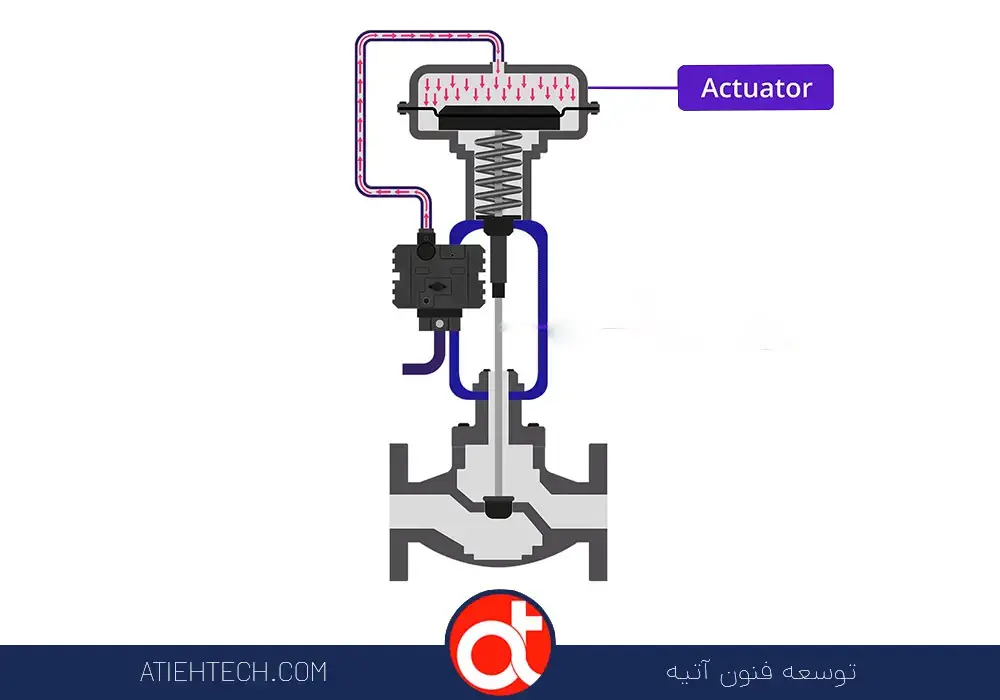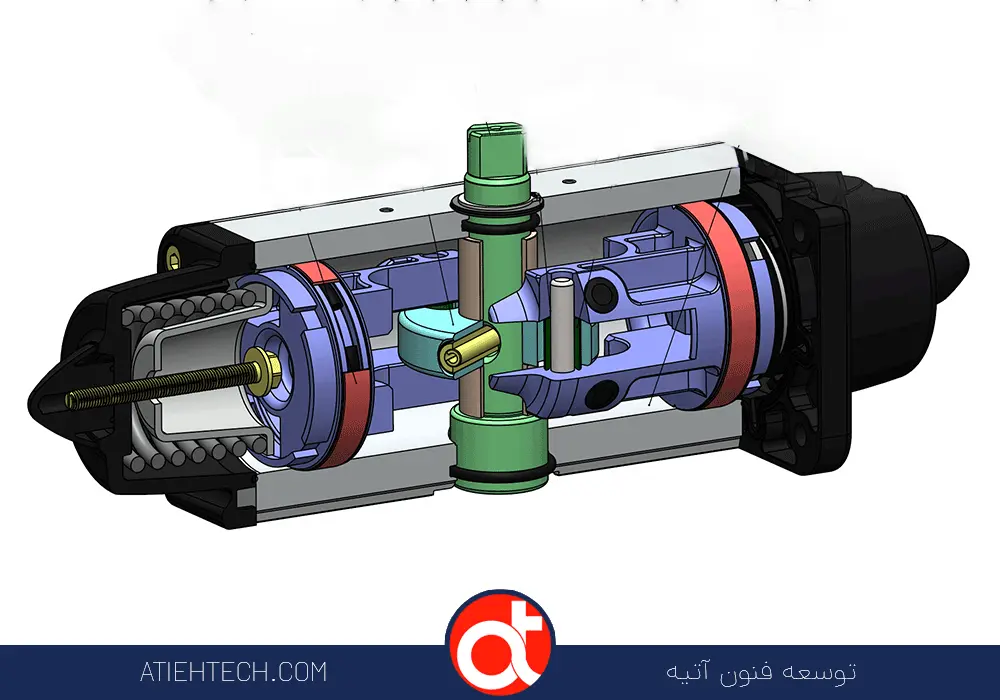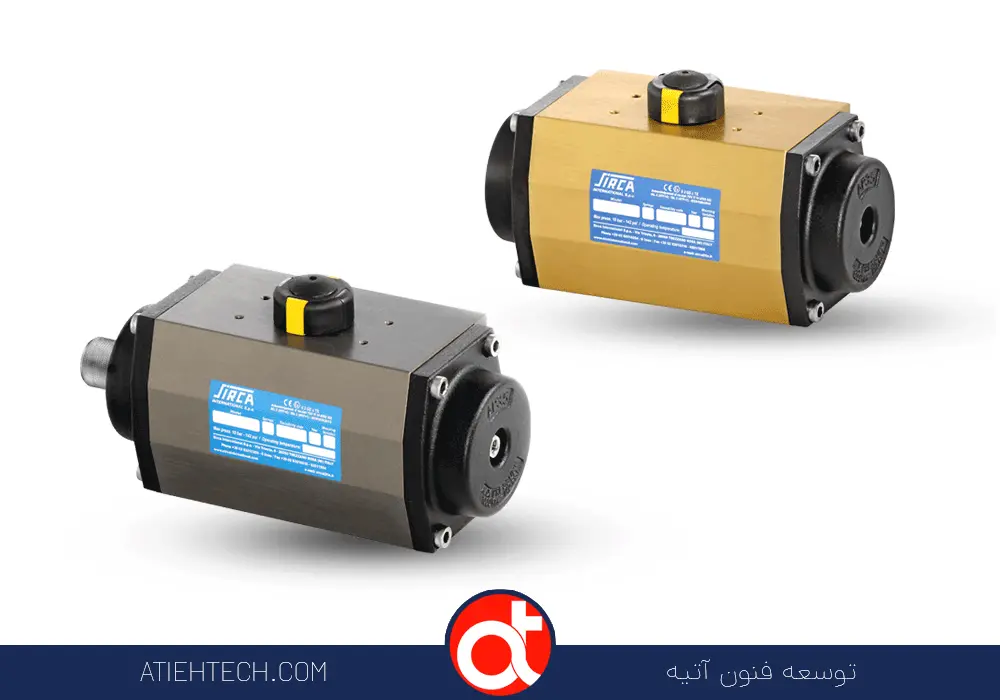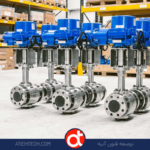What is a pneumatic actuator?

What is a pneumatic actuator?
What is a pneumatic actuator? Pneumatic actuators are one of the most important tools in various industries that are used in the opening and closing of valves and other obstacles. These devices offer very high performance and high speed capabilities by using wind power, which is known as a clean and available power source. In this article, we will examine the components, performance, advantages and applications of pneumatic actuators.
To purchase a pneumatic actuator, please visit the products page.
Pneumatic actuator concept
Pneumatic actuators are a type of actuator that uses compressed air to open and close valves. This type of actuator is widely used in industrial processes due to its high speed of operation and precise control capabilities. Pneumatic actuators are used in various industries such as oil and gas, chemical, water and wastewater, and food industries.For example, in the oil and gas industry, these actuators are used to control fluid flow and ensure the safety of equipment operation. Also, in the chemical and water and wastewater industries, they are designed to open and close various valves and optimally manage processes. In addition, in the food industry, due to high hygiene standards, these actuators are a suitable option for automation of production lines.

Main components of pneumatic actuator
The main components of a pneumatic actuator include the body, which is the housing for the other components, the piston, which acts as the moving element and produces the necessary force, and the air inlet and outlet system, which includes valves and channels that direct compressed air into and out of the actuator. Also, guards help maintain the actuator’s optimal performance against environmental conditions and possible damage.
Body: The body is often made of environmentally resistant alloys for greater durability and longevity.
Piston: Compressed air pressure within the actuator moves the piston, which directly opens and closes the valve.
Axial: The piston movement is transmitted to the valve shaft via an axis so that the opening and closing action is performed correctly.
Control parts: These components include sensors and controllers that allow for precise and gradual control of the actuator.
Types of pneumatic actuators
What is a pneumatic actuator and its types are divided into two main categories: linear cylinder actuators that produce linear motion and are used to move objects, and rotary actuators that have rotary motion and are usually used to close doors and valves. These actuators are also available in two-position and single-position versions, each with its own characteristics and applications.
Double Action
This type of actuator uses two compressed air chambers and is capable of moving in both directions. In other words, these actuators can be easily operated in both open and closed directions, and the air pressure supplied to both sides of their operation is controlled.
Single Action
Single actuators use a single housing and are usually spring-loaded. This design allows the actuator to open with air pressure and then close with a spring. These types of actuators are especially useful in situations where greater safety is required.

Pneumatic actuator application
The advantages of pneumatic actuators include high speed of operation and the ability to precisely control movement. They are also easy to install and maintain, and perform well in harsh industrial environments.
High speed: Due to their special design and use of wind power, these actuators have a high speed in opening and closing the valves.
Various sizes: Pneumatic actuators are produced in various dimensions and sizes, which allows them to be used in a variety of projects of different sizes.
Gradual control capability: Using electropneumatic positioners, it is possible to precisely and gradually control the opening and closing operations of valves.
Use of clean energy: Wind power, as a natural and clean source, does not require fossil fuels and is therefore known as an environmentally friendly option.
To purchase various types of actuators, please visit the products page.
Pneumatic actuator application
Pneumatic actuators are used in various industries such as automotive, packaging, and production line automation to control and move equipment. They are also used in hydraulic systems and control valves to regulate the flow of fluids and gases.
Oil and Gas: In this industry, they are used to control fluid flow and in oil and gas extraction operations.
Chemical: Used in chemical processes to control temperature and pressure in reactors and other equipment.
Food: Controlling the flow of liquid and solid food products is very important in this industry, and the use of pneumatic conveyors is possible.
Irrigation systems: Used in agriculture and water resources management to control irrigation and water pumping systems.
conclusion
As one of the key components in modern industry, pneumatic actuators not only have high speed and efficiency but also provide precise and gradual control. Due to these advantages and wide applications, these actuators have quickly become one of the main choices in various industries.The development and improvement of technologies related to pneumatic actuators can help create more efficient solutions in industries and reduce energy consumption. Given the rapid growth of industries and the need for efficient systems, the future of pneumatic actuators can be bright and promising.






Leave a Reply
Want to join the discussion?Feel free to contribute!